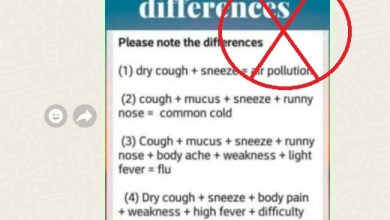
A viral video shared on WhatsApp shows a medical-grade disposable face mask over a cup of steaming water. The video alleges that the masks have fine microscopic germs which start moving because of the hot steam.
The narrator says in Hindi that “these germs get activated when people inhale and exhale through the mask and come out through the fine holes”. The video also says that “people who wear these masks have fallen sick more often”. The 1:45 minute-long video suggests that people should use homemade fabric masks to not get in contact with these germs.




Fact Check:
The video is being shared widely. There are similar videos that are shared in other languages too.
Digiteye India team found videos that debunk this claim. In one of the videos by Oliver Kim, also known as Microbe Hunter, he takes a mask and puts it under a microscope to test the claim.
A trained microbiologist, Kim says that “they seem to move like living things, but the reason why they move is because of a physical process. The dark fibers on the mask are dust fibers that collected over time. You will not find them on new masks. If you do find fibers on new masks, then it is dust that settled on the mask after it was removed (eg mask was placed on the table or it is from the air). Alternatively the fibers settled before the mask was packaged, which is a sign of quality control, but does not mean that these are microscopic robots or worms, like some claim.” These fibres can also be seen in house dust.
Other scientists suggest that the black structures are not dangerous. The respiratory system knows how to deal with these harmless fibres. Unused masks have a network of polypropylene fibres and their binding points which can be seen only under a microscope. Used face masks, which contain various contaminants, have different fragments. These impurities are brought from the outside environment and can be dust, hair, cloth, etc.
Claim:
Face masks contain microscopic germs.
Conclusion:
The black structures are not Morgellons but are dust fibres that collect over time.
Our rating ![]() – Misrepresentation.
– Misrepresentation.





